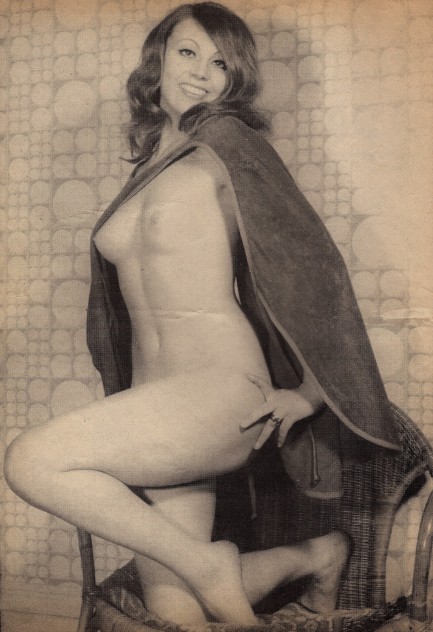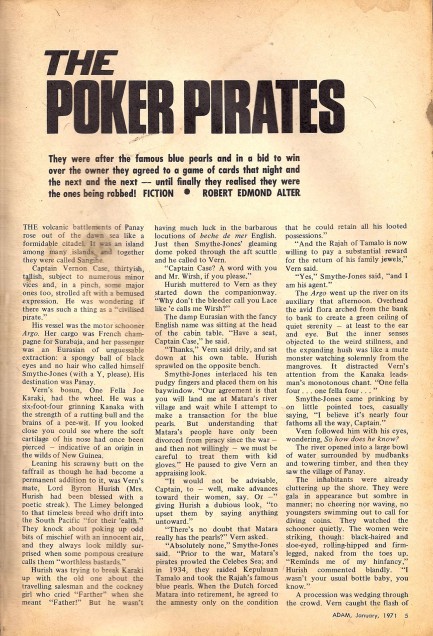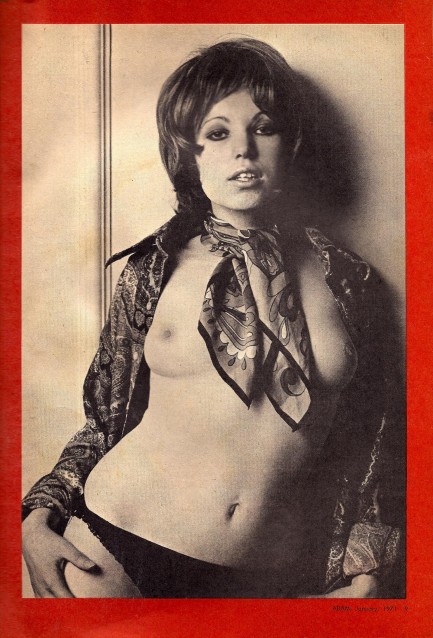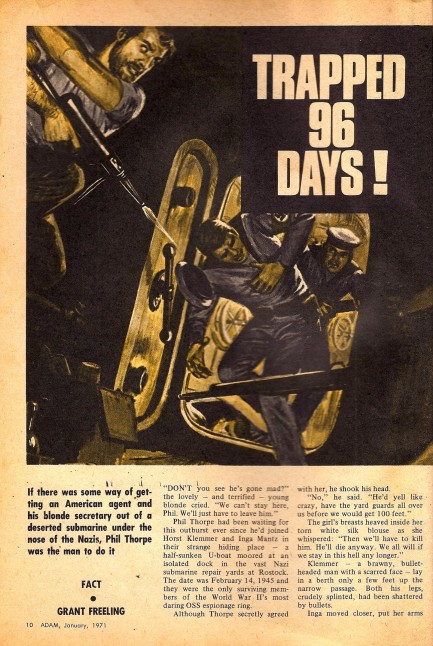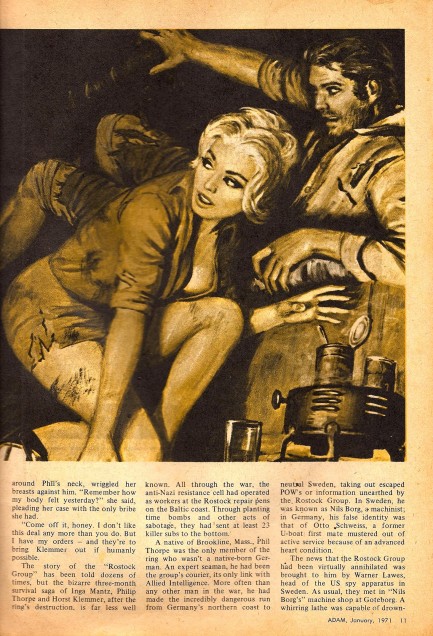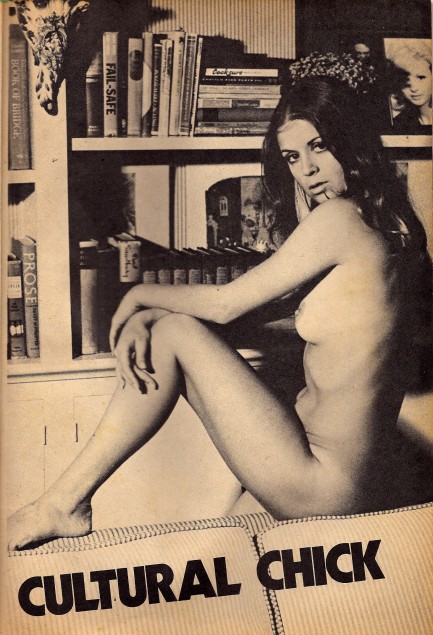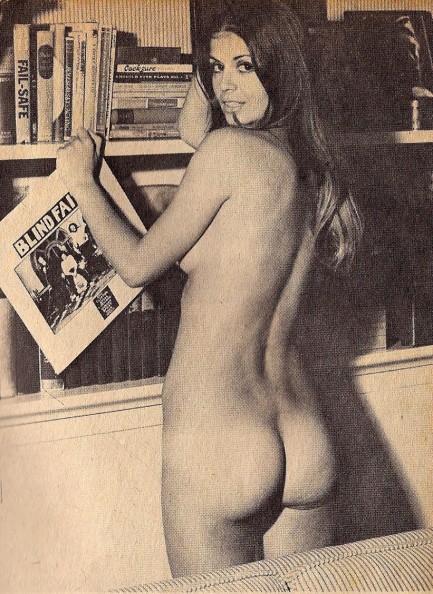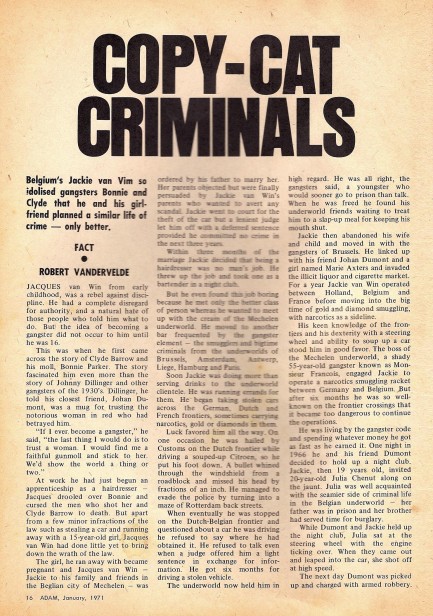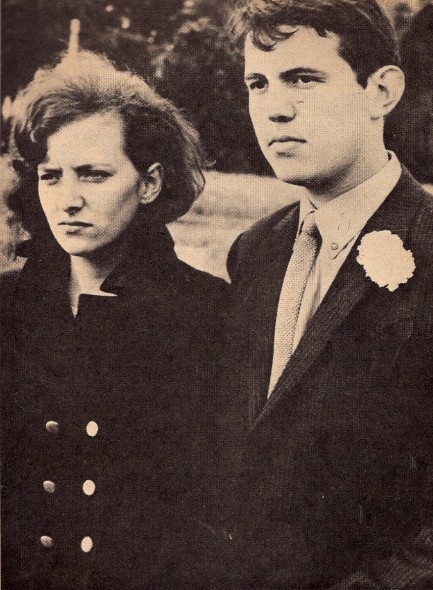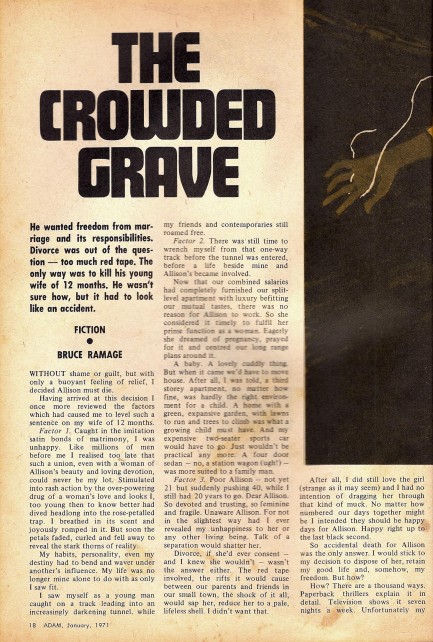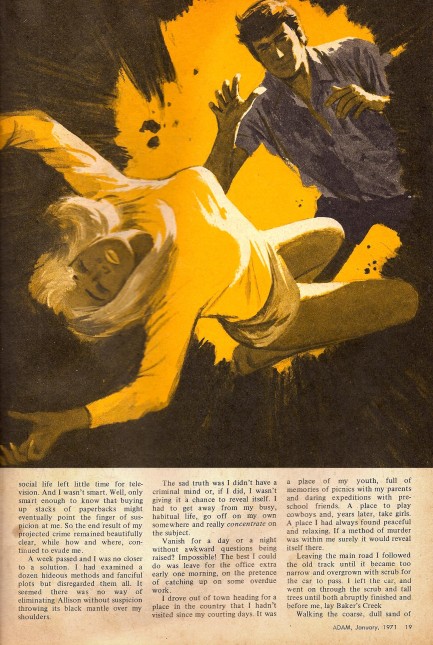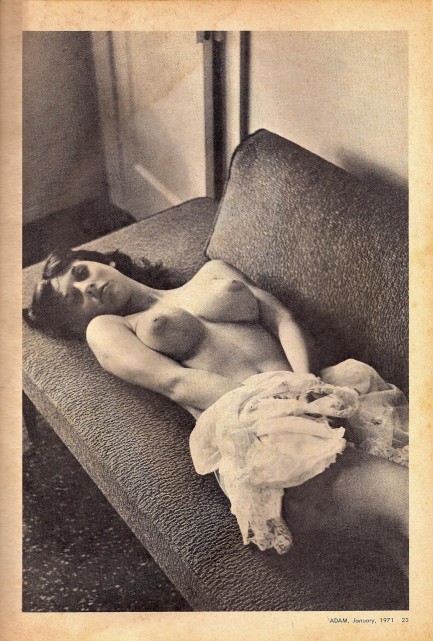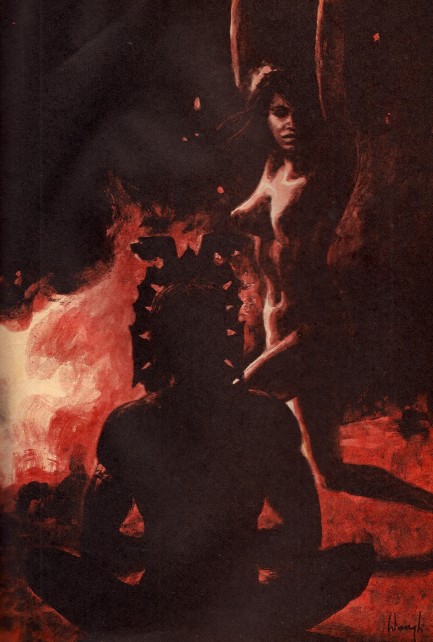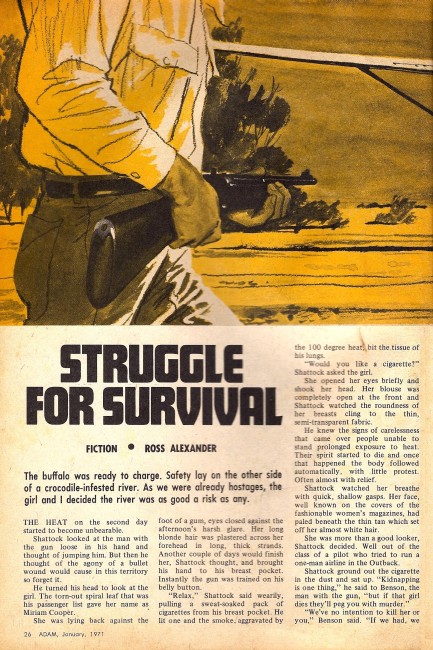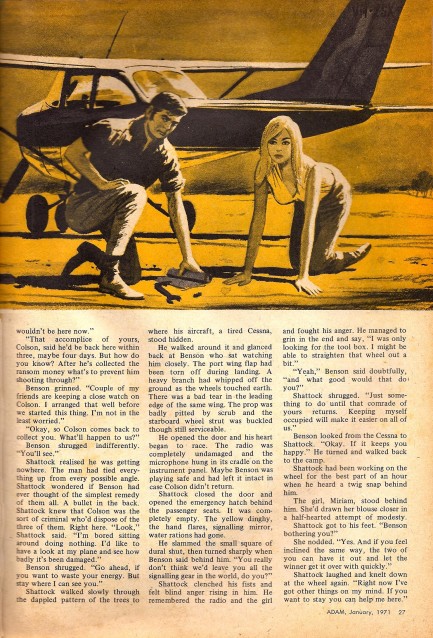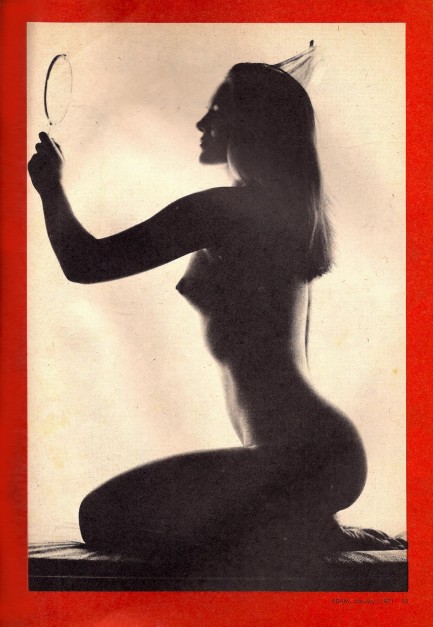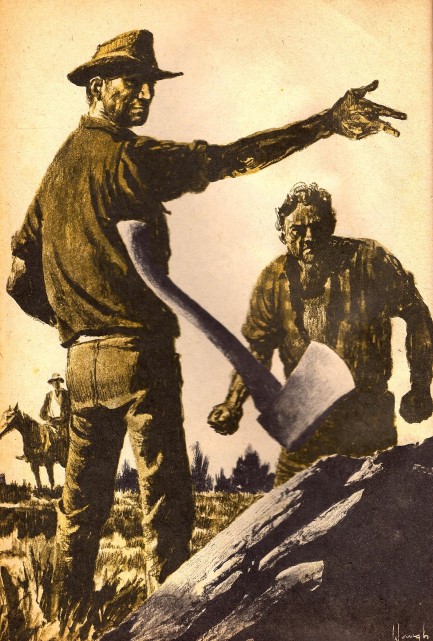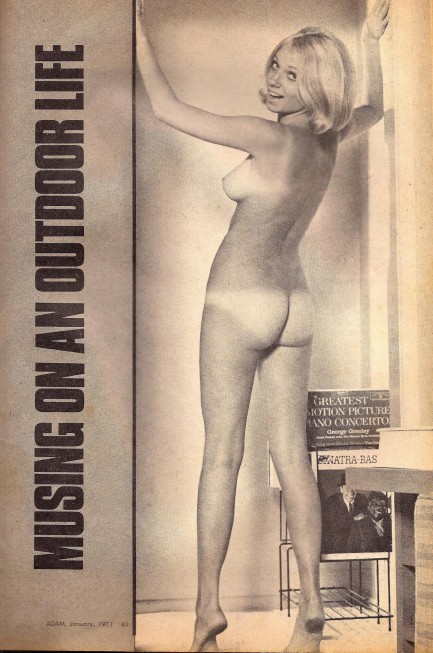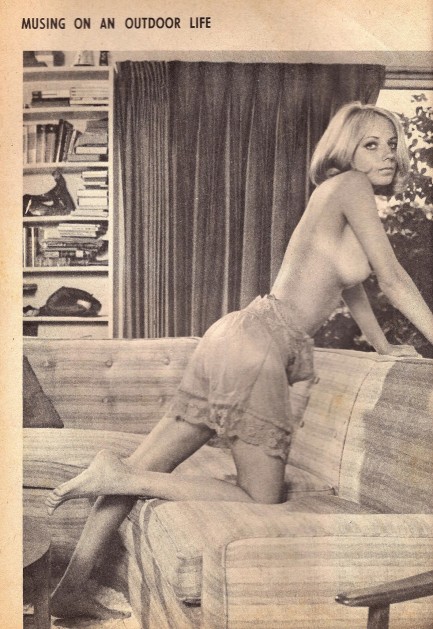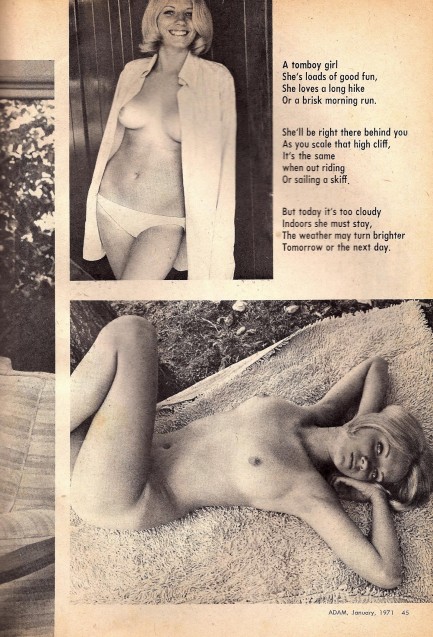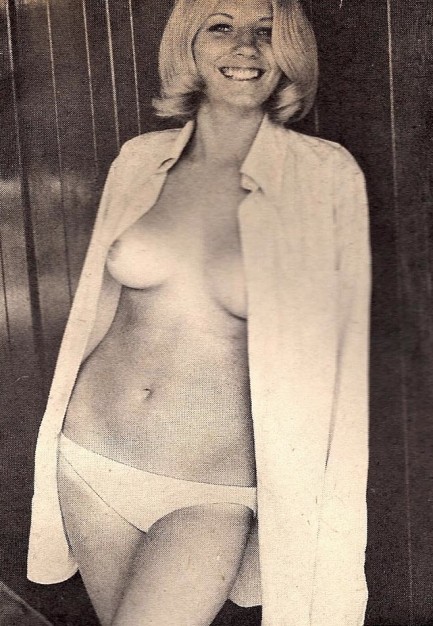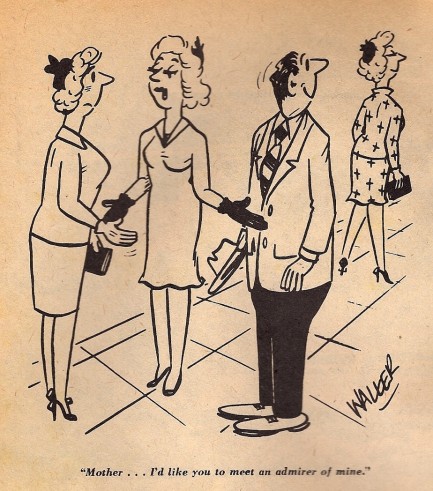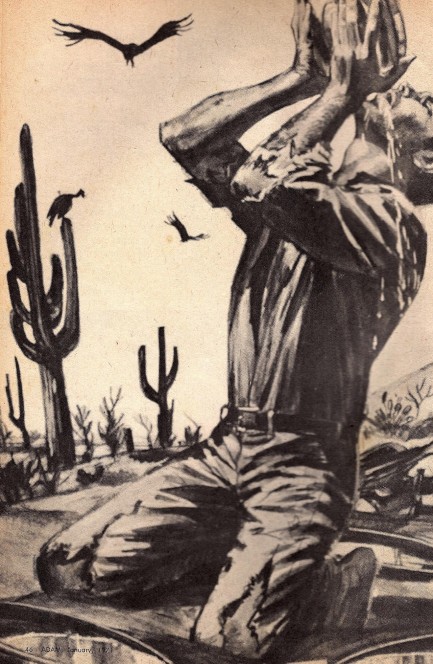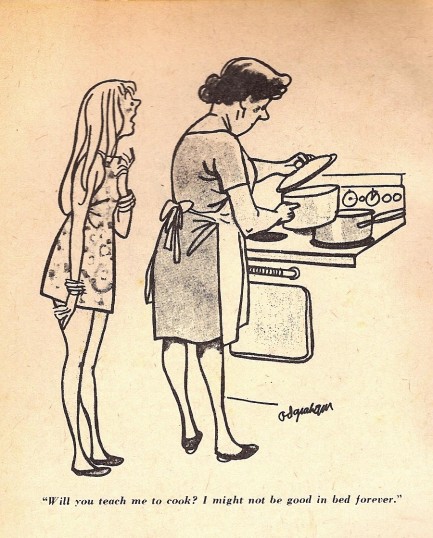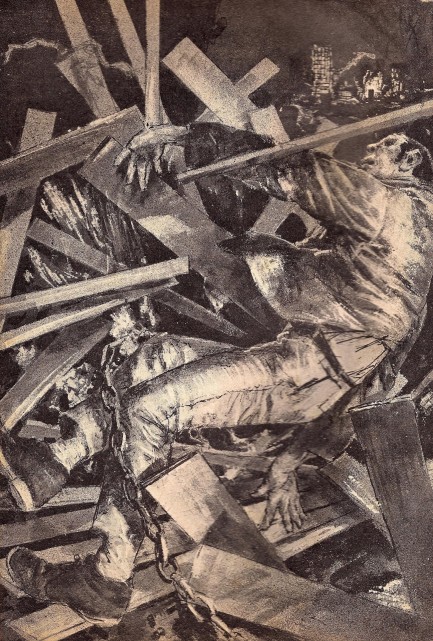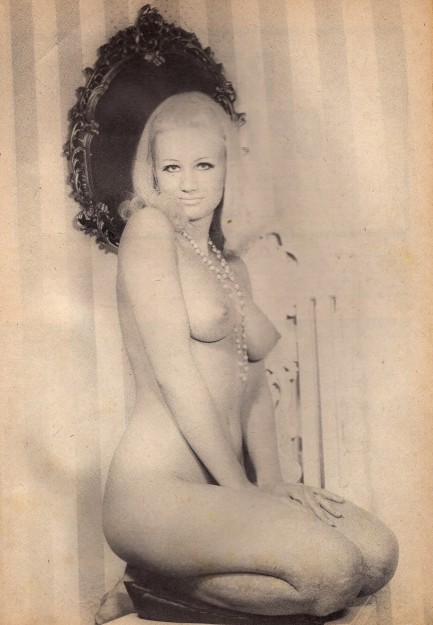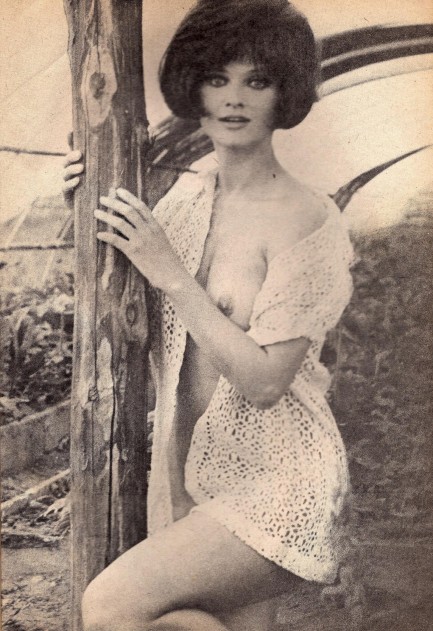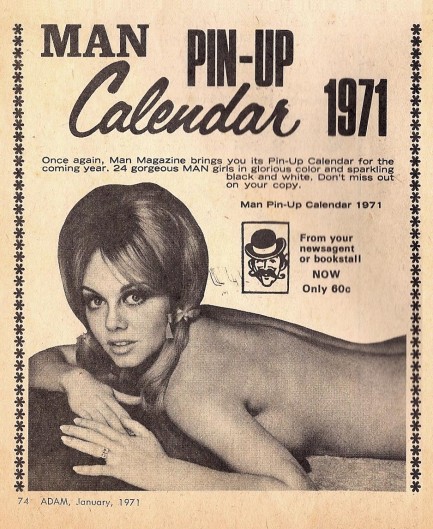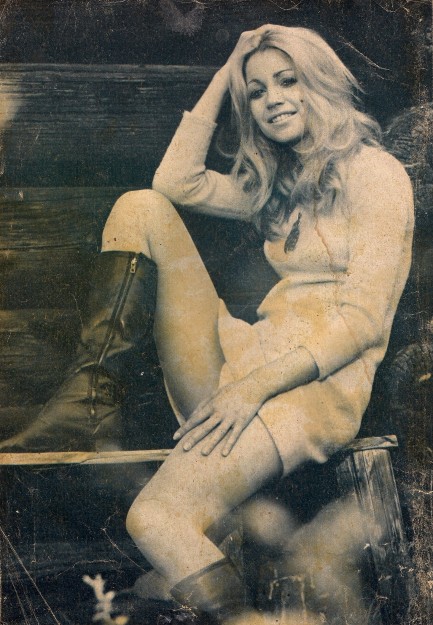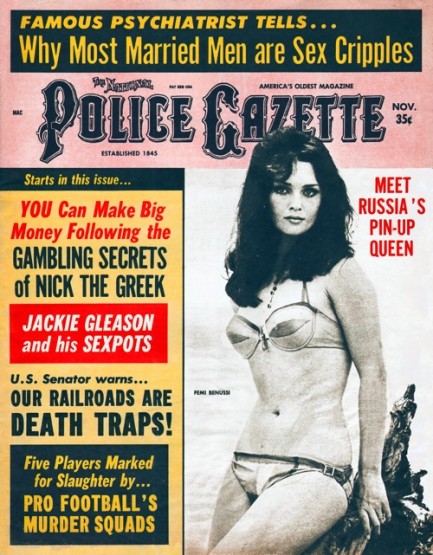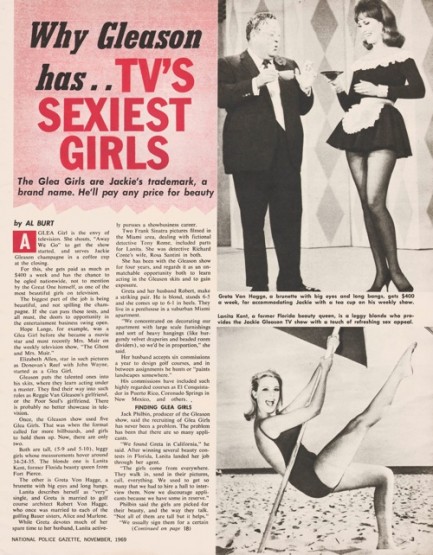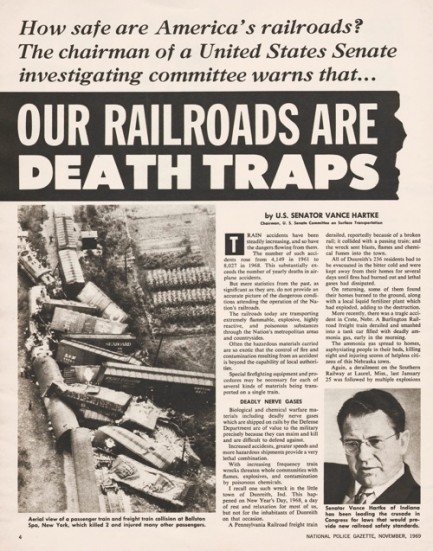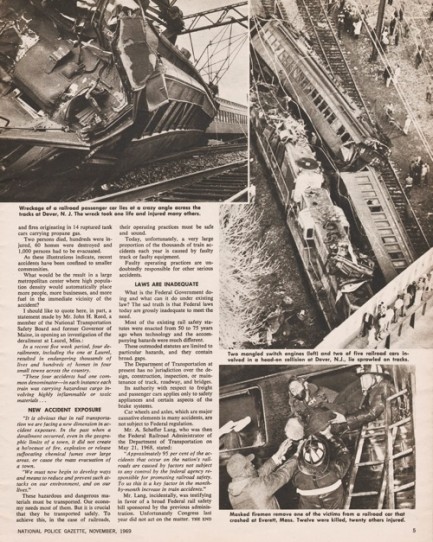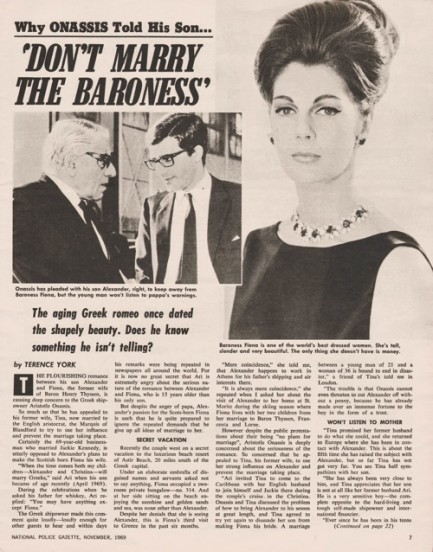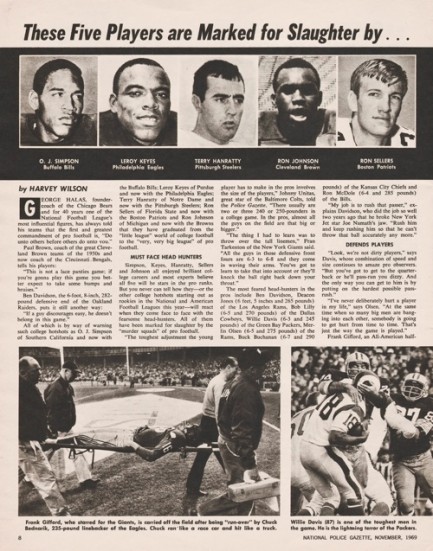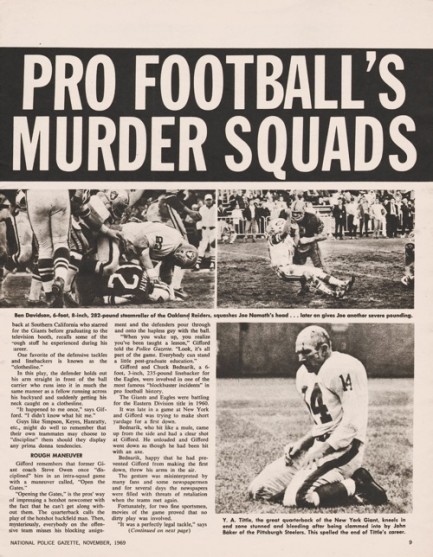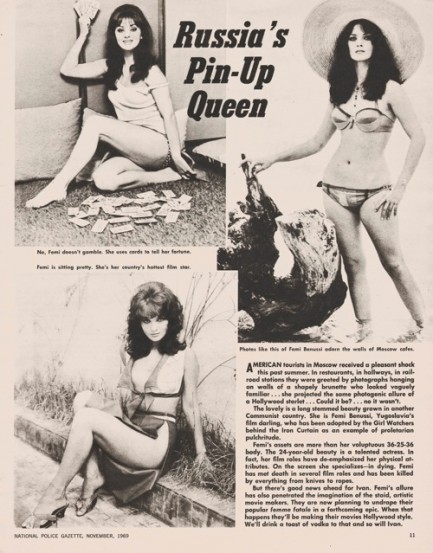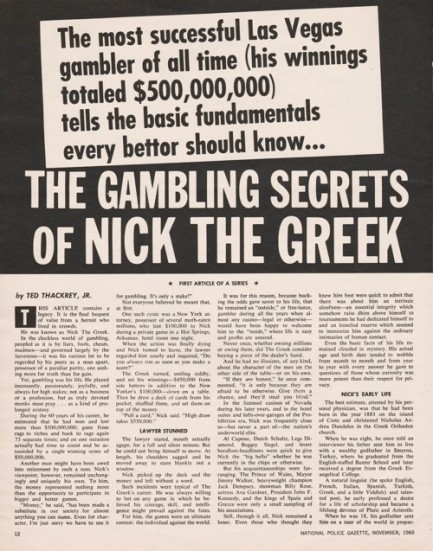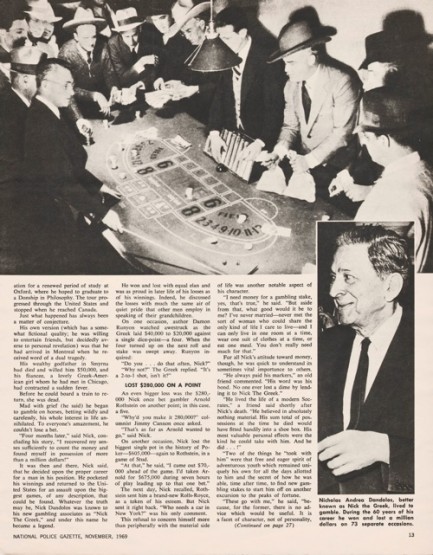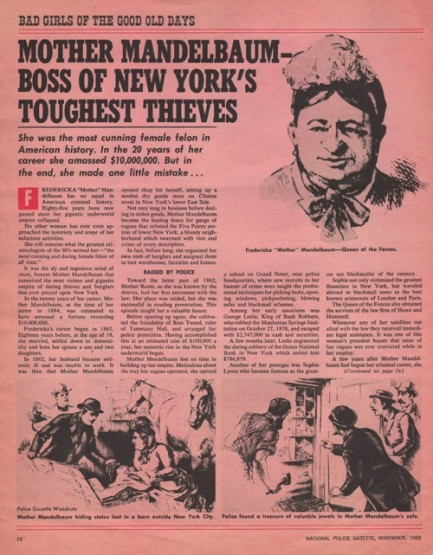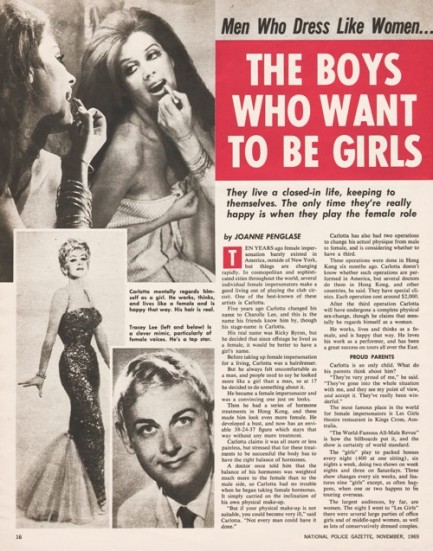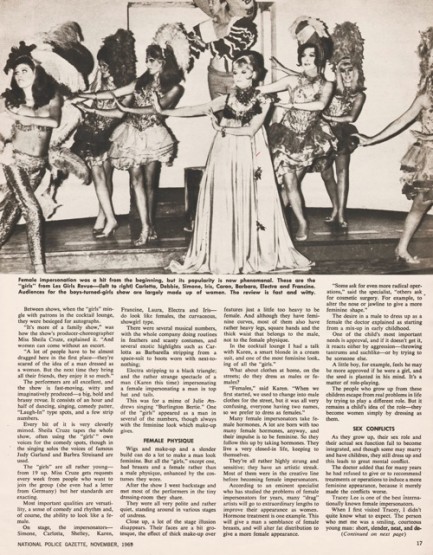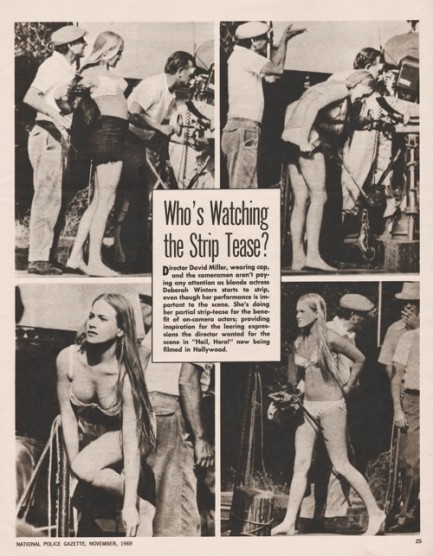 There are very few limits to how fur she'll go for fashion. 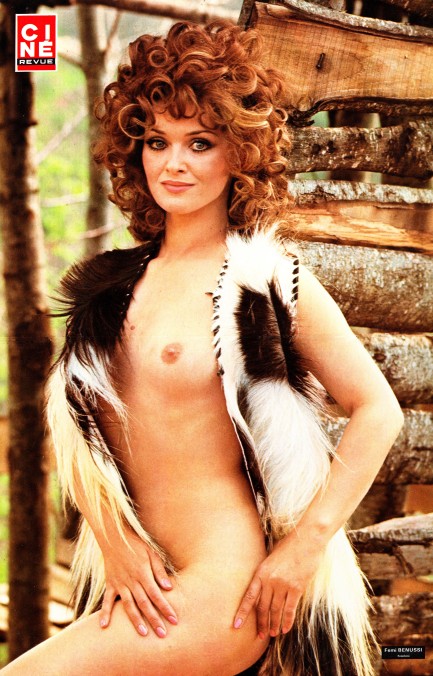
This shot of Italian actress Femi Benussi made by prolific lensman Angelo Frontoni is from a 1977 issue of Ciné-Revue, and shows her wrapped (sort of) in a fur vest, probably made of skunk, which was a trendy choice for coats at the time. Benussi appeared in more than eighty films, among them Tarzana sesso selvaggio and Nude per l'assassino, aka Strip Nude for Your Killer. At some point she became a fixture in commedie sexy all'italiane, a sub-genre of goofy titillation flicks, with humor so sophomoric you'll beg for mercy. Well, you don't have to beg to see Benussi back on Pulp Intl. There are a few more movies of hers we'd like to check out, so she'll return.
 Welch proves indispensable to yet another ’60s caper flick. 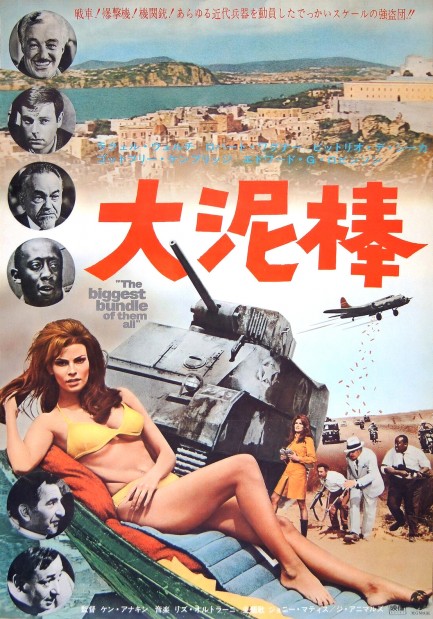
Above you see a promo poster for 大泥棒, or “Great Thief,” made for the 1968 Raquel Welch/Robert Wagner caper flick The Biggest Bundle of Them All. The U.S. poster was painted by master illustrator Robert McGinnis, but we decided to show you the Japanese art instead because it's rare. There are two more Japanese promos below that are also rare. We'll get to the McGinnis version later. In the film, Wagner and his henchmen kidnap an elderly Italian gangster played by Vittorio De Sica and hold him for ransom. Problem is he has no money. At first they don't believe him, but when it finally becomes clear he's broke, Wagner and Co. try to cut bait. But De Sica is terrified all Italy will find out he couldn't pay his own ransom. His reputation would be ruined. So he convinces his kidnappers to join him in a swindle that will maintain his reputation, make him rich again, and earn the kidnappers more money than they ever imagined. De Sica becomes the boss of his own abductors.
For a crime-comedy, it's an ingenious premise, which makes it a shame it wasn't original. Another movie with an almost identical plot called The Happening was in production at Columbia, and when the studio got wind of The Biggest Bundle of Them All it threatened to sue. Metro-Goldwyn-Mayer agreed to give Columbia a cut of Bundle's profits and a legal bloodbath was avoided, but in the same way De Sica's big caper doesn't exactly play out perfectly, Bundle's profits didn't blow the roof off MGM headquarters as planned. And no wonder. It wasn't just the script that wasn't original—the film falls into the same category as continental crime capers like Charade, To Catch a Thief, and Topkapi, and those make for crowded and treacherous cinematic waters. Bundle isn't sophisticated enough, or exciting enough, or infused with enough sexual chemistry to compete with better films of its ilk.
Speaking of sexual chemistry, Welch is naturally the big attraction of any movie she's in, and we've seen enough of her work now to understand that she was more of a persona than an actress during this mid- to late-’60s period. In film after film she basically played herself. Here she smiles and quips and poses, and it's all very Welchian in that groovy way her fans had come to expect—bikinis, lingerie, go-go dancing and all. The movie would be worth far less without her. There are also supporting appearances by Edward G. Robinson and Femi Benussi, while future blaxploitation icon Godfrey Cambridge is one of the kidnappers, so there's plenty for stargazers to enjoy here, but we can't call the movie a success. If you have nothing to do some evening, it might give you a few smiles, but not a bundle of them. After premiering in the U.S. in 1968, The Biggest Bundle of Them All opened in Japan today in 1968.
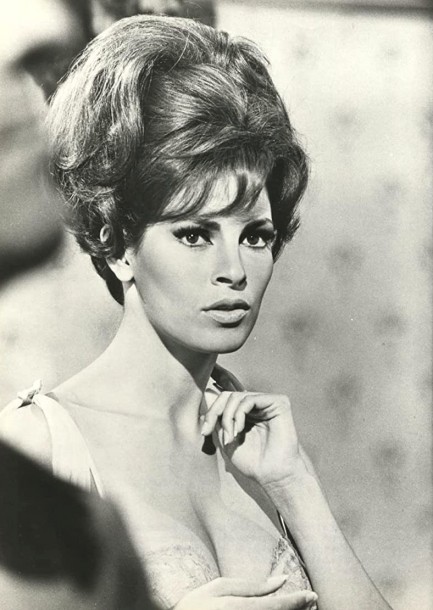 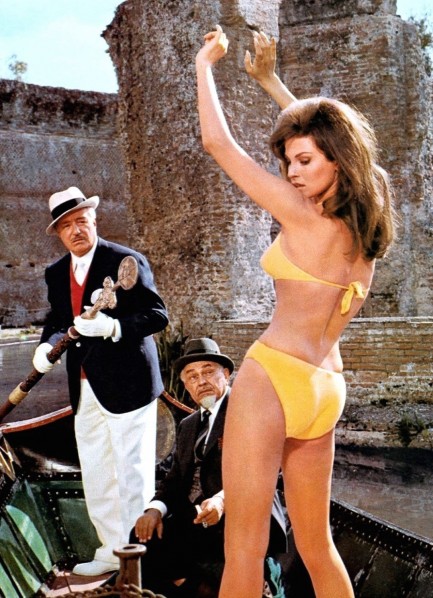 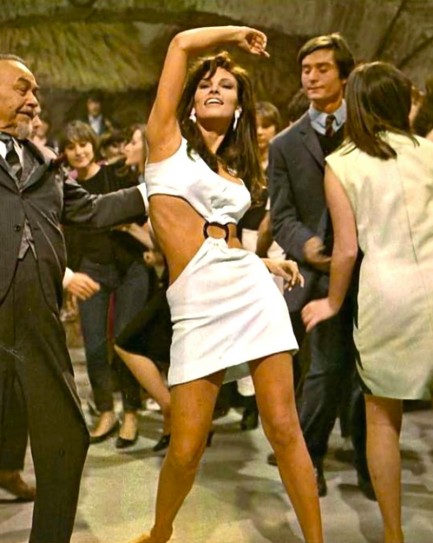 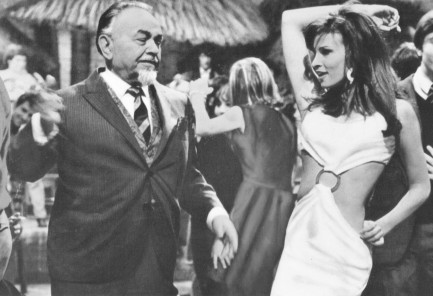 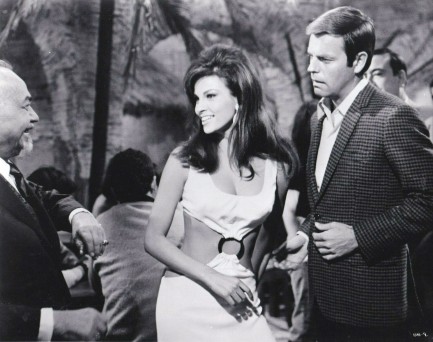 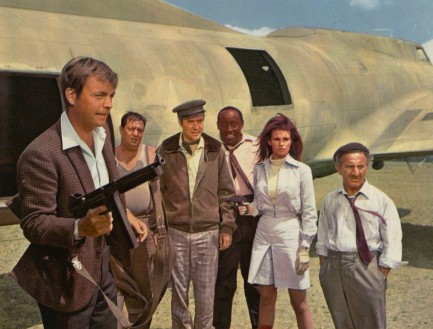 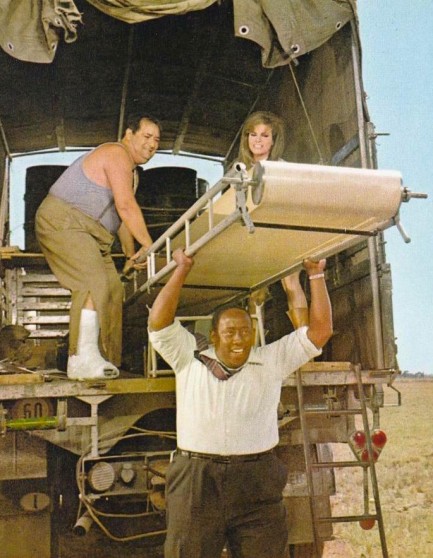 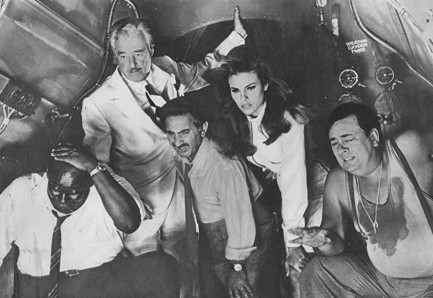  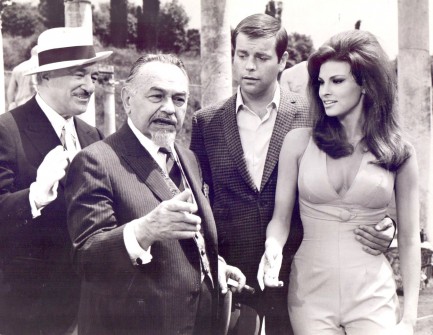  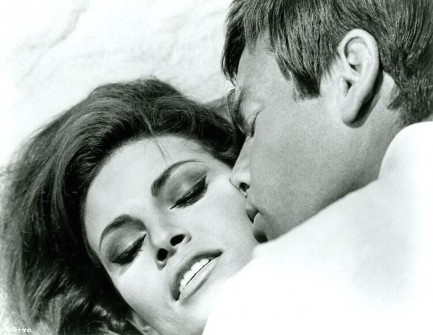 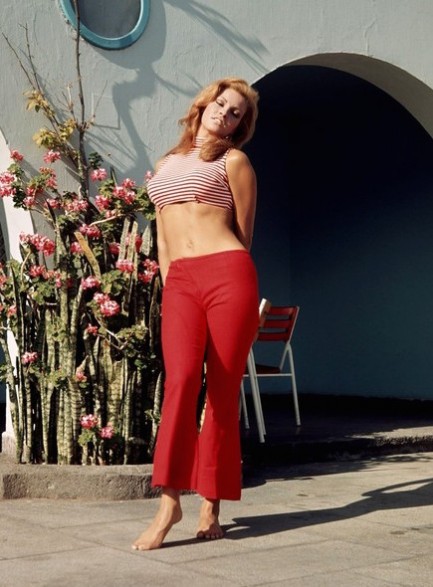  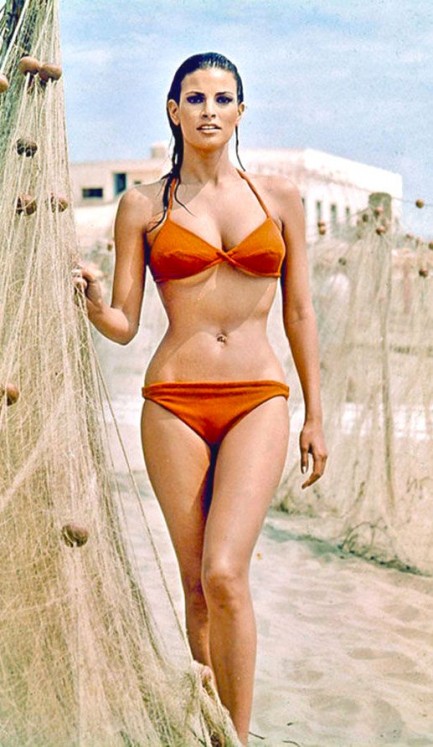 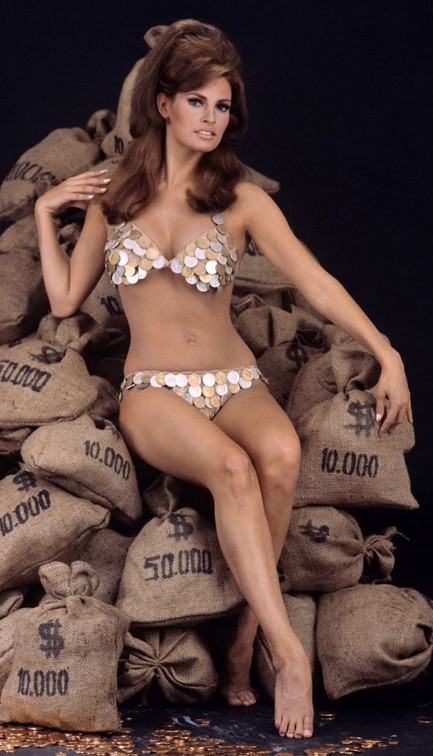 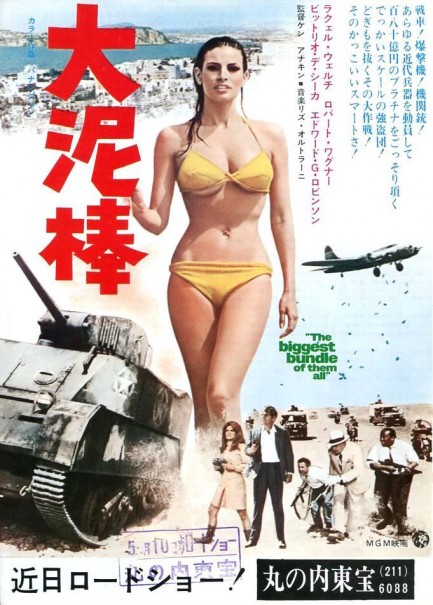 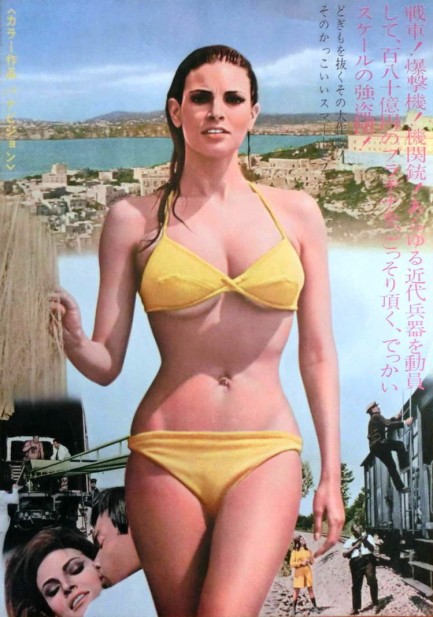
 Femi Benussi has a swinging time in the jungle. 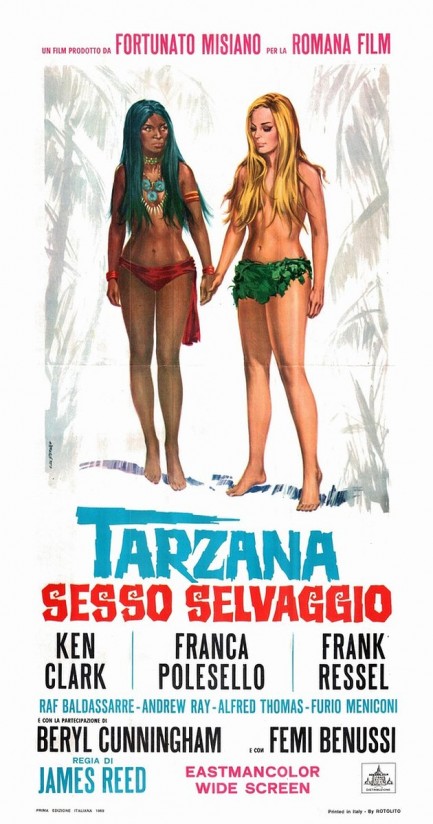
The Italian lost world adventure Tarzana sesso selvaggio, known in English as Tarzana the Wild Girl, has one thing going for it—Femi Benussi as the titular vine swinger. As an infant she was lost in the jungle in a plane crash, but somehow survived thanks to the kindly local primates. About twenty-two years later (judging by her bodily development) an expedition is launched to find her, and of course she's now queen of deepest, darkest Africa, jiggling gloriously about in nothing but a g-string loincloth. In fact the whole production is designed to display Benussi nearly naked, and there's also a topless dance routine performed by Jamaican actress Beryl Cunningham, as well as shower time exposure from Franca Polesello. Interestingly, the movie was rated X when it played in the U.S. But don't let that fool you. Around the time Tarzana was made, the X meant “persons under 16 not admitted.” Nothing pornographic happens here, except perhaps in the minds of U.S. movie censors.
Nudity was not unusual in 1969, so what's with the rating? While Benussi never manages to be clothed, we suspect the X had more to do with Cunningham—a black woman—gyrating half naked in front of the expedition. Her dance even inspires one of the onlookers to punch another in the dick. Must be some Italian thing. She's duly eaten by a leopard for daring to tempt the white man. MPAA censors must have been torn. On one hand they probably ached for America's children to see that nature itself was segregationist, but after consideration they ditched the idea of a G rating, slapped an X on the film, then scuttled home for self-hating wank sessions. All things considered we wish the movie were better. No such luck, but it's unintentionally uproarious, especially the ending, and Benussi is a vision, exploited to the max by Romana Film Co. and director Guido Malatesta. Tarzana, sesso selvaggio premiered in Italy today in 1969.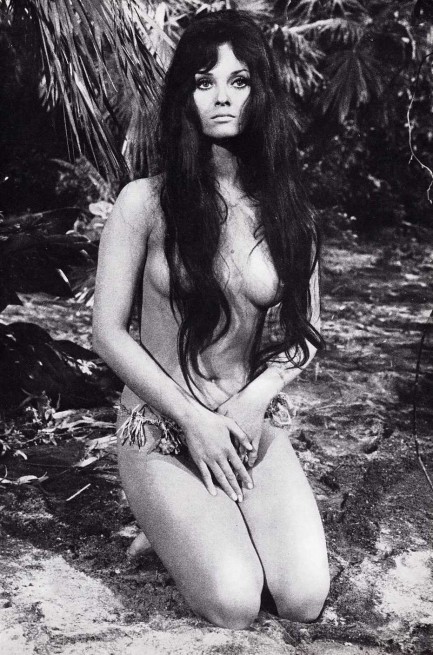 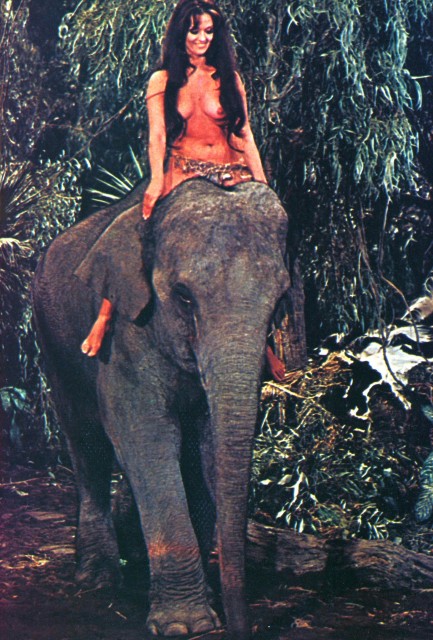  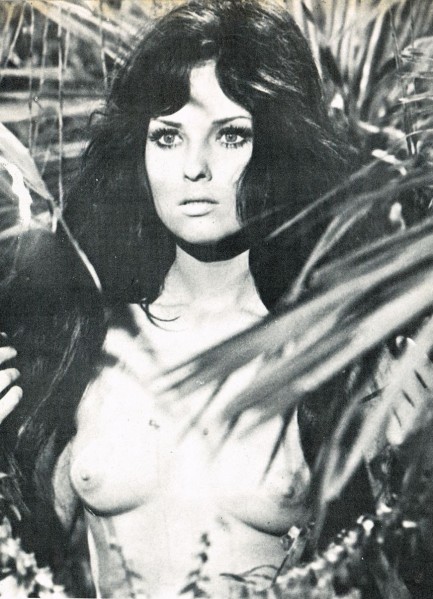  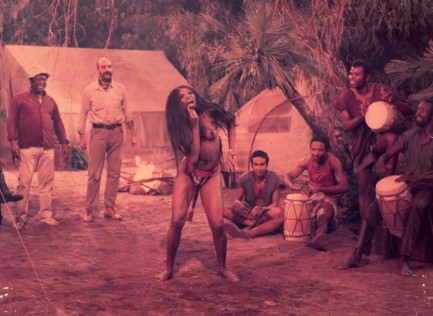 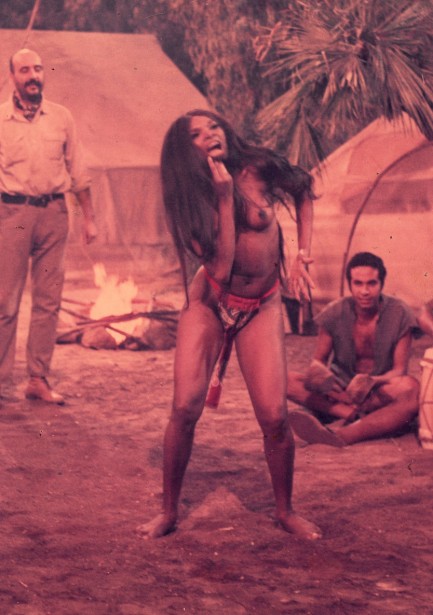 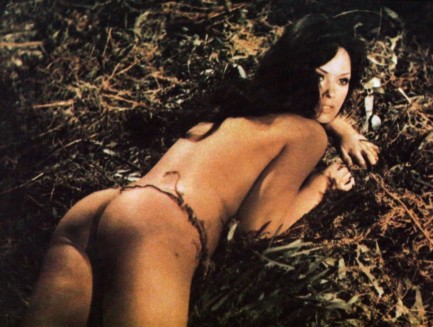 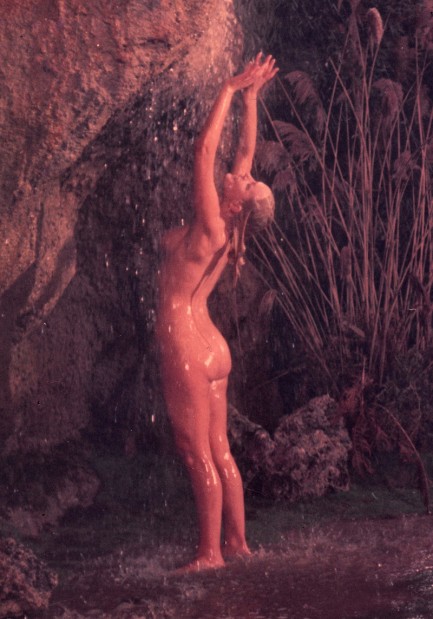 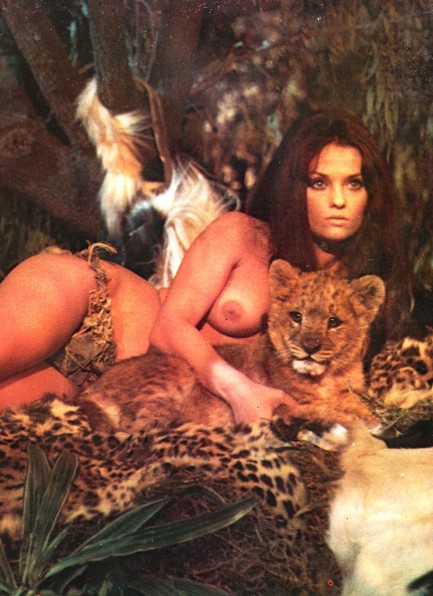 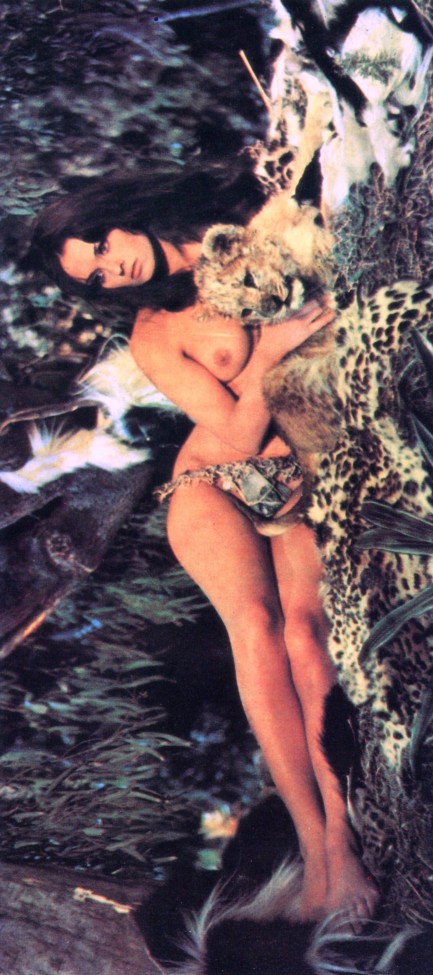 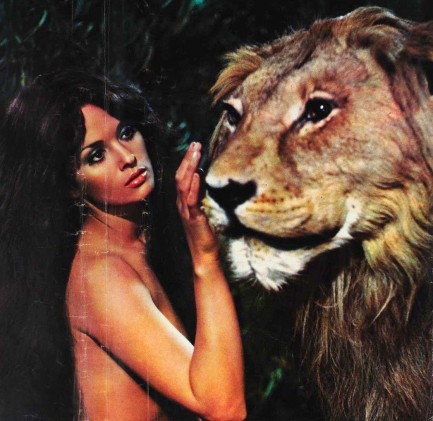 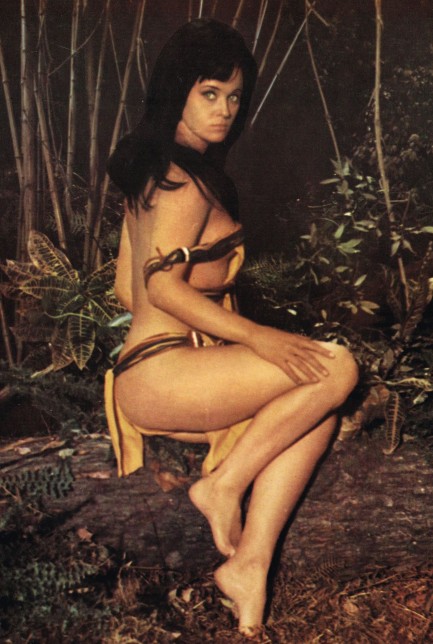
 I can see how excited I've made you. Pour this bowl of cold water on it and see if that helps. 
In the promo photo above Femi Benussi appears in costume—in amazing costume—as Lola in the film Il domestico. Benussi was born in Rovigno, Italy, which is now Rovnij, Croatia, and debuted in 1965's Il boia scarlatto, aka Bloody Pit of Horror. She went on to appear more than eighty films, including the giallo Nude per l'assassino, aka Strip Nude for Your Killer and the actioner Storia di sangue, aka Blood Story. The above image is from 1974, and just to make Benussi's outfit complete it also came with a hat, shoes, and a bruise courtesy of the makeup department, below. As we continue to work our way through various 1970s schlock classics you can be sure that Benussi will show up here again.
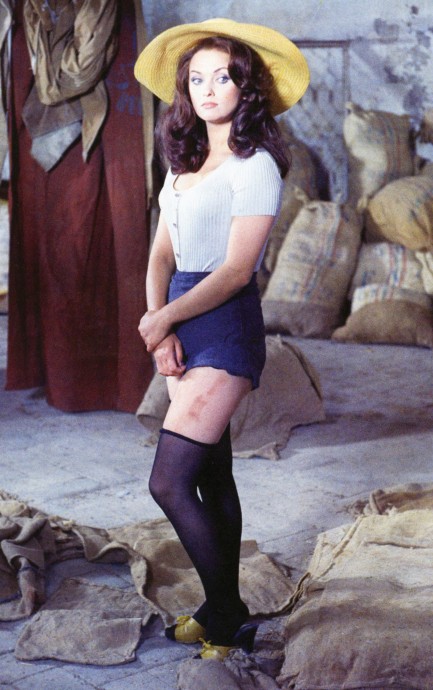
 A killer in black stalks Rome's fashionista set. 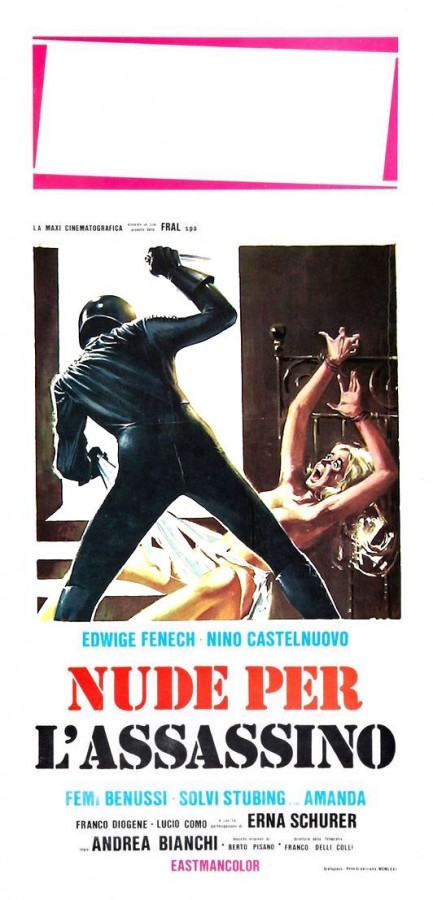
In Nude per l'assassino, aka Strip Nude for Your Killer there's a motorcycle helmeted serial killer on the loose and police have no idea who he is. The murderer first slaughtered a gynecologist whose most recent patient died of cardiac arrest during an abortion, but now the maniac is working his way through staff and talent at the Albatross Modeling Agency, killing women and men, catching many at their most vulnerable—i.e. naked. Suspects and clues are minimal. But hmm, let's see, how does a botched abortion tie into the other killings? Could it be.... revenge? Very likely. And what often happens in giallo when killers wear face-obscuring motorcycle helmets? Could it be... Well, we won't give it away, except to say the twist of who's under that helmet isn't a twist at all.
Near the end of the film there's a radio broadcast during which an announcer talks about the most recent murder. But first he reports on the government's “drastic new austerity measures.” We were fascinated to learn this was going on in Italy forty years ago. It didn't work then, and it doesn't work now. We can say the same about the movie. But while you won't find Nude per l'assassino on any list of top giallo films, it has some charms: Edwige Fenech, Femi Benussi, Solvi Stubing, and Erna Schurer. We've been pretty lazy about the giallo genre over the years, but watching this movie made us decide to remedy that. We're going to check out some of the better giallo flicks and report back. Nude per l'assassino premiered in Italy today in 1975.  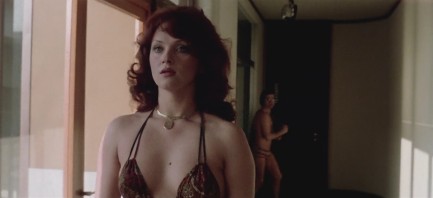  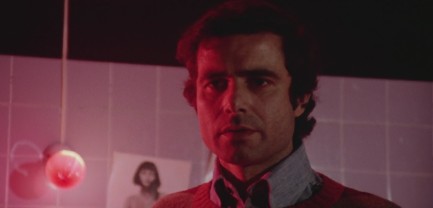 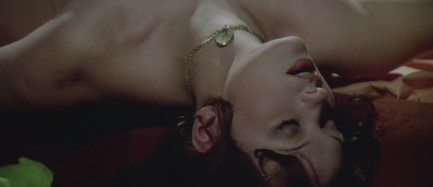 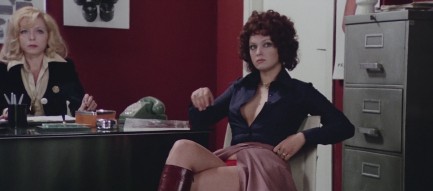 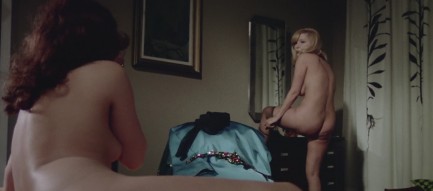 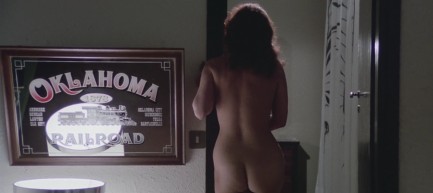 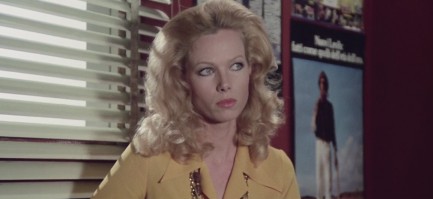 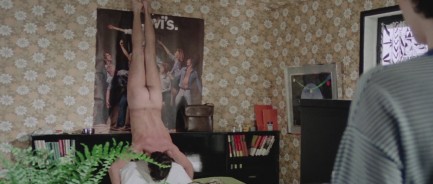 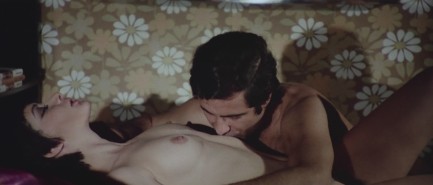 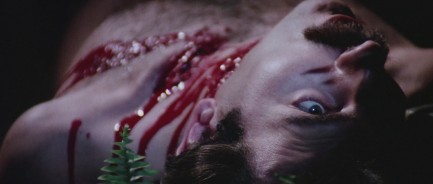
 Rage against the machine gun. 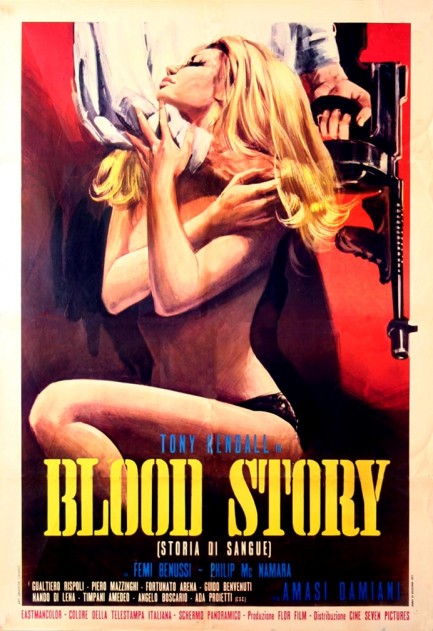
Promo poster for Amasi Damiani’s prohibition-themed gangster thriller Blood Story, aka Storia di sangue, with Tony Kendall and Femi Benussi, 1972.
|
 |

The headlines that mattered yesteryear.
2003—Hope Dies
Film legend Bob Hope dies of pneumonia two months after celebrating his 100th birthday. 1945—Churchill Given the Sack
In spite of admiring Winston Churchill as a great wartime leader, Britons elect
Clement Attlee the nation's new prime minister in a sweeping victory for the Labour Party over the Conservatives. 1952—Evita Peron Dies
Eva Duarte de Peron, aka Evita, wife of the president of the Argentine Republic, dies from cancer at age 33. Evita had brought the working classes into a position of political power never witnessed before, but was hated by the nation's powerful military class. She is lain to rest in Milan, Italy in a secret grave under a nun's name, but is eventually returned to Argentina for reburial beside her husband in 1974. 1943—Mussolini Calls It Quits
Italian dictator Benito Mussolini steps down as head of the armed forces and the government. It soon becomes clear that Il Duce did not relinquish power voluntarily, but was forced to resign after former Fascist colleagues turned against him. He is later installed by Germany as leader of the Italian Social Republic in the north of the country, but is killed by partisans in 1945.
|

|
|

It's easy. We have an uploader that makes it a snap. Use it to submit your art, text, header, and subhead. Your post can be funny, serious, or anything in between, as long as it's vintage pulp. You'll get a byline and experience the fleeting pride of free authorship. We'll edit your post for typos, but the rest is up to you. Click here to give us your best shot.

|
|

























































